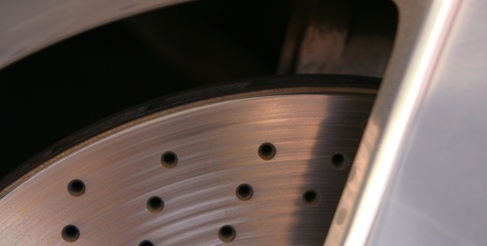
DOT 3 and DOT 4 brake fluids are formulated to lubricate the moving parts within the brake system and withstand weather changes while maintaining a liquid state necessary for proper brake function. The differences, however, are what stand between your foot and one rough stop.
DOT 3 brake fluids meet the minimal requirements set forth by the Department of Transportation. DOT 4 fluids endure tests that are more rigorous and are used in high temperature performance vehicles.
All brake fluids begin as ethylene glycol or antifreeze. DOT 3 fluids, for regular vehicles, are made from polyalkylene glycol ether and other hydroscopic glycol chemicals. DOT 4 fluids have borate esters added which raise the temperature of the boiling point for better performance under extreme racing conditions.
Boiling points are the major differences between formulas. As brake fluid heats up because of friction, it boils, forming gas bubbles that lead to soft brake pedals. Dry boiling refers to new, unexposed brake fluid. DOT 3 brake fluid has a dry boiling point of 401 degrees while DOT 4 boils at 446 degrees.
Wet boiling refers to old brake fluid or fluid that has been exposed to moisture from the environment. DOT 3 boils at 284 degrees while Dot 4 boils at 311 degrees.
As brake fluid sits in the line, it collects moisture, which evaporates to steam, interferes with braking capabilities, reduces the boiling temperature and leads to corrosion. DOT 4 is designed to tolerate water levels better than DOT 3. Regardless of the type of brake fluid, water levels should be less than 3 percent of the total fluid in the line. For this reason, brake fluid should be changed often to reduce the amount of moisture in the line.